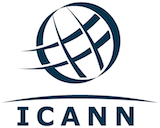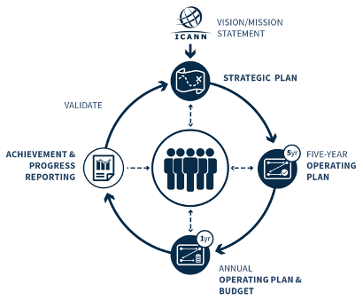ICANN Planning Process
ICANN's Planning Process encompasses a five-year Strategic Plan, a five-year Operating Plan, and a one-year Operating Plan & Budget. The cycle culminates with Achievement & Progress Reporting.
The ICANN planning process is continuous and allows for an overlapping of its three components, along with performance measurement and reporting:
-
Five-Year Strategic Plan – Designed to shape ICANN's priorities, the Five-Year Strategic Plan establishes a vision and a set of strategic objectives and goals in service of ICANN's mission. The Strategic Plan enables ICANN to continue to fulfill its mission and meet new and continuously evolving challenges and opportunities. ICANN's Bylaws require the preparation and adoption of a Strategic Plan every five years.
ICANN Strategic Plans can be found here.
- Five-Year Operating Plan – The Five-Year Operating Plan outlines the executions that support the achievement of the Strategic Plan, as well as ongoing operations that are driven by ICANN's mission. ICANN's Bylaws require the preparation and adoption of a Five-Year Operating Plan at the beginning of each fiscal year.
-
Annual Operating Plan & Budget – Informed by the Five-Year Operating Plan, the Annual Operating Plan and Budget sets forth the focus of efforts and organizational commitments for the fiscal year. ICANN's Annual Operating Plan and Budget includes the IANA and Public Technical Identifiers Annual Operating Plan and Budget. ICANN's Bylaws require the preparation and adoption of an Annual Operating Plan and Budget prior to the start of each fiscal year.
ICANN Operating Plans and Budgets by Fiscal Year can be found here.
-
Achievement & Progress Reporting – Communicate performance metrics in support of the multi-stakeholder model of Accountability & Transparency.
See the ICANN org report to the Board and the Annual report.
Questions? Email us at: [email protected].

